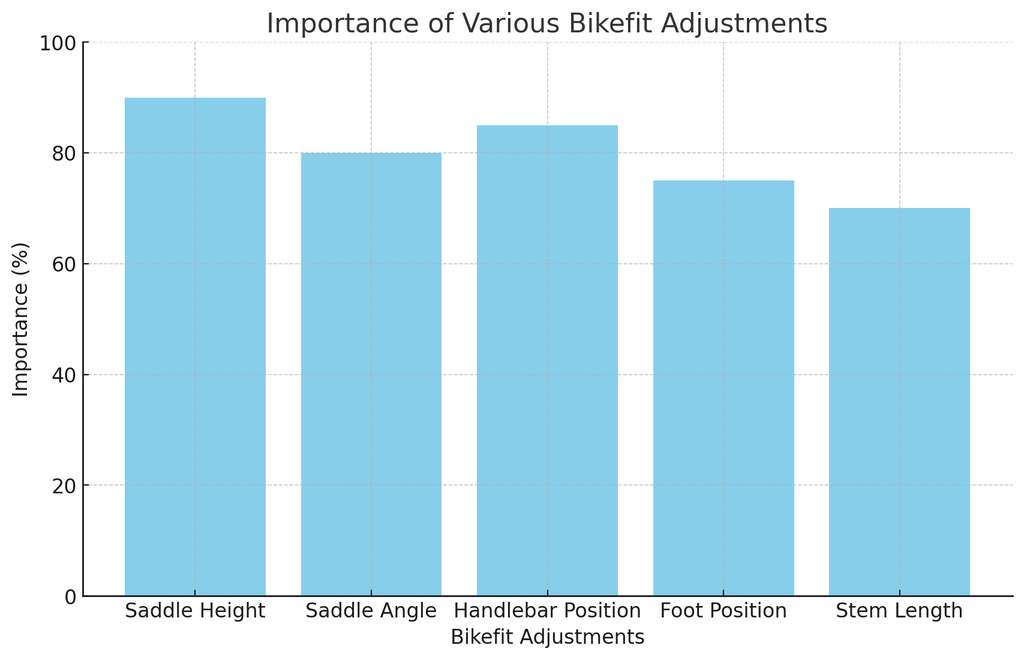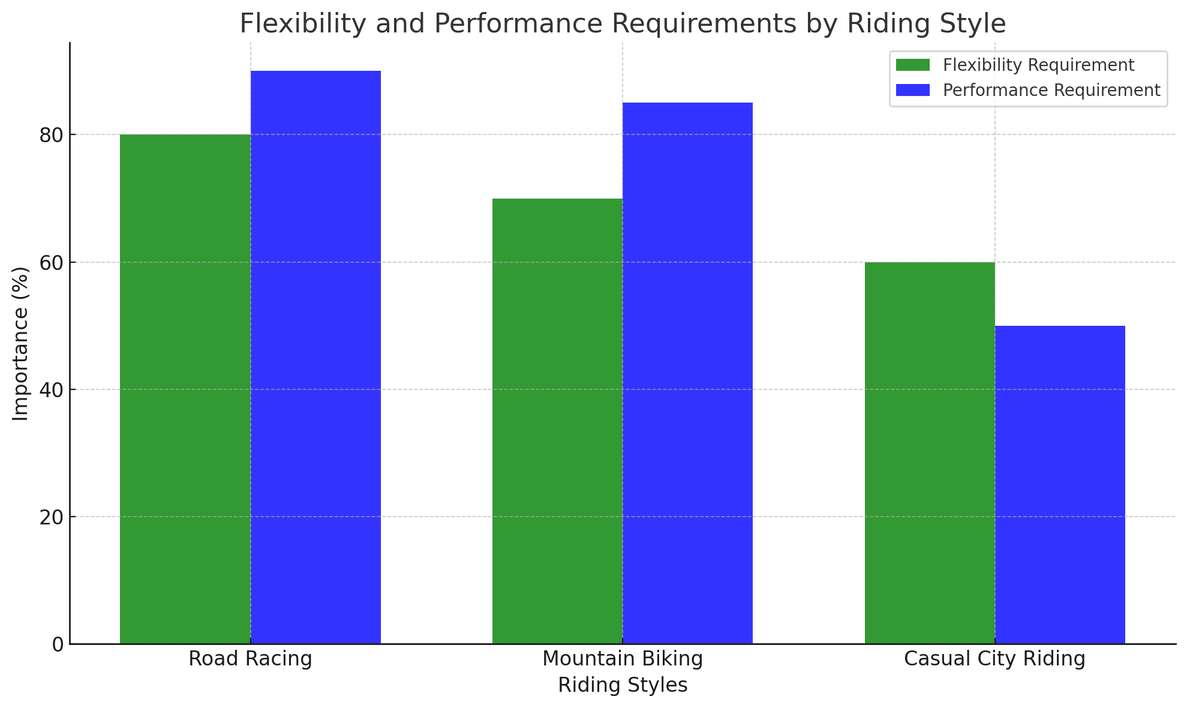
Basic Bikefit principles
Understanding the Fundamentals of Bikefitting
Key Takeaways
| Principle | Description |
|---|---|
| Body-centric Approach | Focus on how the human body moves and functions during cycling. |
| Measurement Precision | Utilize technology for accurate assessment and adjustments. |
| Balance and Compensation | Differentiate between making changes to the bike and to the rider's body. |
| Comprehensive Assessment | Include both on-bike and off-bike evaluations for a thorough understanding. |
| Personalization | Tailor the bikefit to individual rider needs and mechanics. |
Bikefitting is a crucial aspect of cycling, whether you're a casual enthusiast or a professional athlete. It's about ensuring that your bike is not just a vehicle, but an extension of your body, optimized for comfort, efficiency, and performance. At the core of bikefitting is a body-centric approach. Unlike traditional views that focus primarily on the bike, modern bikefitting emphasizes the rider's body mechanics and movement.
The Importance of Accurate Measurements
Bikefitting has evolved with technology, and now, precise measurements play a pivotal role. Gone are the days of guesswork and eyeballing. With tools like BikeFittr's advanced AI system, riders can achieve a fit that's not just good, but scientifically optimized. This aligns with the principle: if you can't measure it, you can't fix it. Sophisticated tools, like infrared motion capture systems and saddle pressure technology, reveal intricacies in riding patterns and bike-rider interaction, ensuring a more accurate and effective bikefit.
Balancing Correction and Compensation
A fundamental aspect of bikefitting is understanding the balance between correction and compensation. This involves distinguishing between adjustments made to the bike (compensation) and changes in the rider's body (correction). Both elements are crucial for an optimal bikefit. While immediate adjustments to the bike can enhance riding comfort and efficiency, long-term corrections through off-bike exercises target the root cause of imbalances. This dual approach ensures both immediate improvement and sustainable biking health.
Comprehensive Rider Assessment
A thorough bikefit must go beyond just looking at the rider on the bike. Off-the-bike assessments are essential to understand a rider's physical capabilities and limitations. These assessments can highlight issues like a knee drifting outwards due to various reasons - saddle height, foot mechanics, or even hip conditions. Without this comprehensive evaluation, bikefitting can miss critical elements affecting the rider's comfort and performance.
Personalizing the Bikefit
Every rider is unique, and so should be their bikefit. It's not just about the standard adjustments; it's about personalizing the fit based on the rider's specific needs, style, and body mechanics. Understanding individual differences is key to achieving a bikefit that enhances riding experience while preventing injuries. This personalization can be significantly enhanced by using BikeFittr's AI-based recommendations, which tailor the bikefit to each rider's unique profile.
For more on bikefit principles, read about the basics of bike frame geometry, the importance of bike size, and how to measure your inseam for a bike fit.
Adjusting Saddle Height and Angle for Optimal Fit
Saddle adjustments are among the most critical aspects of bikefitting. Proper saddle height ensures that your legs can pedal efficiently without straining. It's not just about how tall you are; it involves the length of your legs and how your body interacts with the bike. Adjusting the saddle height is a fine balance between maximizing power and ensuring comfort. To learn more about this, explore our detailed guide on adjusting saddle height.
The saddle angle is equally important. A properly angled saddle can prevent discomfort and allow for a more efficient pedal stroke. It's a nuanced adjustment that can make a significant difference in your riding experience. Get a deeper understanding of this by reading about setting your saddle angle.
Handlebar Positioning for Comfort and Efficiency
Handlebar positioning significantly impacts your comfort, control, and aerodynamics on the bike. The right handlebar position can reduce strain on your arms, shoulders, and back, enhancing your overall cycling experience. This involves considering the handlebar height, reach, and angle. Mastering handlebar positioning is crucial for both comfort and performance. For a comprehensive guide on this, check out our handlebar positioning guide.
The Role of Foot Position in Bikefit
The position of your feet on the pedals plays a crucial role in your riding efficiency and comfort. Foot position affects everything from power transfer to joint alignment. It's essential to position your feet correctly to avoid strain and maximize pedal efficiency. This includes considerations like cleat placement and foot alignment on the pedal. Dive deeper into this topic by reading about foot position in bike fit.
Importance of Stem Length in Bikefit
The length of your bike's stem affects your reach to the handlebars and overall riding posture. A properly fitted stem length can make a significant difference in your comfort and control on the bike. It's a critical component that connects the rider to the bike, influencing how the bike handles and feels. Understanding the right stem length for your body and riding style is key. Learn more about this in our article on stem length in bike fit.

Tailoring Bike Fit to Riding Styles
Every cyclist has a unique riding style, whether it's road racing, mountain biking, or casual city riding. The principles of bikefit must be adapted to these varied riding styles. For instance, a road racer might prioritize aerodynamics and speed, while a mountain biker needs a fit that offers control and agility on rough terrain. Understanding how to adjust your bikefit according to your preferred style is crucial for optimal performance. For insights on how to adapt your bikefit to different riding styles, read more on bike fit for various riding styles.
Considering Rider Flexibility in Bikefit
An often-overlooked aspect of bikefit is the rider's flexibility. Flexibility impacts how comfortably you can maintain certain positions on the bike. It influences factors like saddle height, handlebar reach, and even pedal choice. A flexible rider might be comfortable in a more aggressive, aerodynamic position, while a less flexible rider may need a more upright position to avoid strain. Incorporating flexibility into your bikefit can greatly enhance comfort and efficiency. Delve deeper into this subject by exploring our article on rider flexibility in bike fit.

Balancing Comfort and Performance in Bikefit
A key challenge in bikefit is finding the right balance between comfort and performance. While a comfortable bikefit is crucial for long rides and preventing injuries, performance-oriented riders might opt for a fit that prioritizes efficiency and speed, even if it's less comfortable. The ideal balance depends on your personal goals, riding style, and physical capabilities. Understanding how to strike this balance is fundamental to a successful bikefit. For more insights on finding the right balance, read our discussion on bike fit: comfort vs. performance.
In conclusion, mastering the basics of bikefitting is essential for every cyclist. By understanding and applying these principles, you can enhance your cycling experience, reduce the risk of injury, and improve your performance. Remember, a good bikefit is a blend of science and art, requiring a deep understanding of the human body, cycling mechanics, and personal preferences. Whether you're adjusting your saddle, fine-tuning your handlebars, or considering your flexibility and riding style, each element plays a crucial role in achieving the perfect bikefit.
Bikefitting is a dynamic process, evolving as you grow and change as a cyclist. It's not just about making a one-time adjustment; it's about continuously adapting and refining your bikefit to suit your evolving needs and goals. Embrace the journey of bikefitting as a key part of your cycling adventure.
For a more in-depth understanding of bikefit principles and their applications, don't forget to explore the various resources we've linked throughout this article. And remember, BikeFittr is here to assist you every step of the way with state-of-the-art tools and expert guidance. Happy cycling!